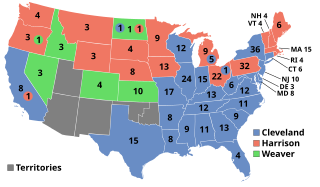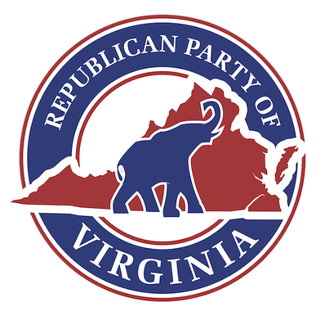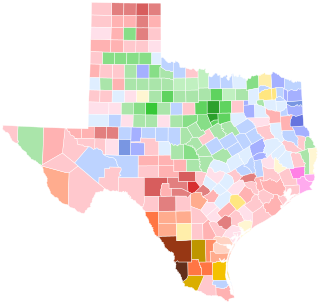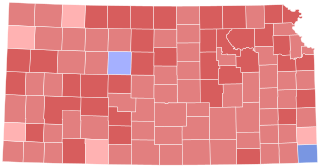| |||||||||||||||||
| |||||||||||||||||
 County results
| |||||||||||||||||
| |||||||||||||||||
The 1877 Ohio gubernatorial election was held on October 9, 1877. Democratic nominee Richard M. Bishop defeated Republican nominee William H. West with 48.94% of the vote.
| |||||||||||||||||
| |||||||||||||||||
 County results
| |||||||||||||||||
| |||||||||||||||||
| Elections in Ohio |
|---|
 |
The 1877 Ohio gubernatorial election was held on October 9, 1877. Democratic nominee Richard M. Bishop defeated Republican nominee William H. West with 48.94% of the vote.
Major party candidates
Other candidates
| Party | Candidate | Votes | % | ±% | |
|---|---|---|---|---|---|
| Democratic | Richard M. Bishop | 271,625 | 48.94% | ||
| Republican | William H. West | 249,105 | 44.88% | ||
| Independent | Stephen Johnson | 16,912 | 3.05% | ||
| Greenback | Lewis H. Bond | 12,489 | 2.25% | ||
| Prohibition | Henry Adams Thompson | 4,836 | 0.87% | ||
| Majority | 22,520 | ||||
| Turnout | |||||
| Democratic gain from Republican | Swing | ||||

Presidential elections were held in the United States on November 7, 1876. Republican Governor Rutherford B. Hayes of Ohio very narrowly defeated Democrat Governor Samuel J. Tilden of New York. Following President Ulysses S. Grant's decision to retire after his second term, U.S. Representative James G. Blaine emerged as frontrunner for the Republican nomination; however, Blaine was unable to win a majority at the 1876 Republican National Convention, which settled on Hayes as a compromise candidate. The 1876 Democratic National Convention nominated Tilden on the second ballot.

Presidential elections were held in the United States on November 5, 1872. Incumbent President Ulysses S. Grant, the Republican nominee, defeated Democratic-endorsed Liberal Republican nominee Horace Greeley.

Presidential elections were held in the United States on November 8, 1892. In the fourth rematch in American history, the Democratic nominee, former president Grover Cleveland, defeated the incumbent Republican President Benjamin Harrison. Cleveland's victory made him the first president in American history to be elected to a non-consecutive second term, a feat not repeated until Donald Trump was elected in 2024. The 1892 election saw the incumbent White House party defeated in three consecutive elections, which did not occur again until 2024.

Presidential elections were held in the United States on November 3, 1896. Former Governor William McKinley, the Republican nominee, defeated former Representative William Jennings Bryan, the Democratic nominee. The 1896 campaign, which took place during an economic depression known as the Panic of 1893, was a political realignment that ended the old Third Party System and began the Fourth Party System.

Richard Bishop, also known as Richard M. Bishop and Papa Richard, was an American politician from the U.S. state of Ohio. Bishop served as the 34th governor of Ohio.

William Henry McMaster was an American politician who served as the tenth Governor of South Dakota from 1921 until 1925. A member of the Republican Party, he went on to serve as a member of the United States Senate from South Dakota from 1925 to 1931.

The Republican Party of Virginia (RPV) is the Virginia chapter of the Republican Party. It is based at the Richard D. Obenshain Center in Richmond. As of May 2024, it controls all three statewide elected offices, 5 out of 11 U.S. House seats, and the governor's seat within the state.
The Massachusetts Republican Party (MassGOP) is the Massachusetts branch of the U.S. Republican Party.

From March 8 to June 7, 1960, voters of the Republican Party chose its nominee for president in the 1960 United States presidential election. Incumbent Vice President Richard Nixon was selected as the nominee through a series of primary elections and caucuses culminating in the 1960 Republican National Convention held from July 25 to July 28, 1960, in Chicago, Illinois.
The 1974 Massachusetts general election was held on November 5, 1974, throughout Massachusetts. Democratic and Republican candidates were selected in party primaries held September 10, 1974.

The 1968 United States Senate election in Kansas took place on November 5, 1968, concurrently with the U.S. presidential election as well as other elections to the United States Senate in other states as well as elections to the United States House of Representatives and various state and local elections.

The 1970 Michigan gubernatorial election was held on November 3, 1970. Republican William Milliken won the election, defeating Democratic nominee Sander Levin.

The 1961 United States Senate special election in Texas was held on May 27, 1961. The election was held to replace outgoing Senator Lyndon B. Johnson, who had been elected Vice President of the United States.

The 1876 Colorado gubernatorial election took place on October 3, 1876, to elect the 1st Governor of Colorado after the state was admitted to the union on August 1, 1876. Republican John Long Routt, last governor of the Colorado Territory, was elected in a close race against Democratic nominee Bela M. Hughes.

The 1942 Kansas gubernatorial election was held on November 3, 1942. Republican nominee Andrew Frank Schoeppel defeated Democratic nominee William H. Burke with 56.68% of the vote.

The 1888 North Carolina gubernatorial election was held on November 6, 1888. Democratic nominee Daniel Gould Fowle defeated Republican nominee Oliver H. Dockery with 51.97% of the vote.

The April 1876 Connecticut gubernatorial election was held on April 3, 1876. Incumbent governor and Democratic nominee Charles R. Ingersoll defeated Republican nominee H. Robinson with 51.85% of the vote.

The 1877 Iowa gubernatorial election was held on October 9, 1877. Republican nominee John H. Gear defeated Democratic nominee John P. Irish with 49.39% of the vote.

A general election was held in the U.S. state of Wyoming on Tuesday, November 2, 1926. All of the state's executive officers—the Governor, Secretary of State, Auditor, Treasurer, and Superintendent of Public Instruction—were up for election. Republicans narrowly picked up the governorship and solidified their control on the other statewide offices, increasing their margin of victory in each race.

The 1877 Wisconsin gubernatorial election was held on November 6, 1877. Under internal party pressure, incumbent Republican Governor Harrison Ludington, who had barely won the 1875 election, was pressured to not seek a second term. Former State Assembly Speaker William E. Smith, a longtime figure in Wisconsin politics, was selected as the Republican nominee, and Milwaukee County Municipal Judge Thomas A. Mallory won a protracted battle for the nomination at the Democratic convention. Smith and Mallory were joined in the general election by Greenback nominee Edward Phelps Allis. Ultimately, though the Republican vote share shrunk relative to 1875, the Democratic vote share shrunk more, and Smith won a larger victory than Ludington did, though only with a 44% plurality.